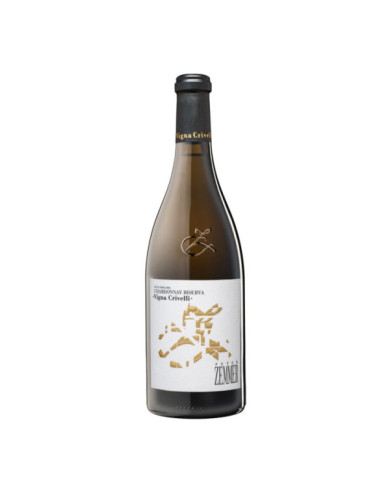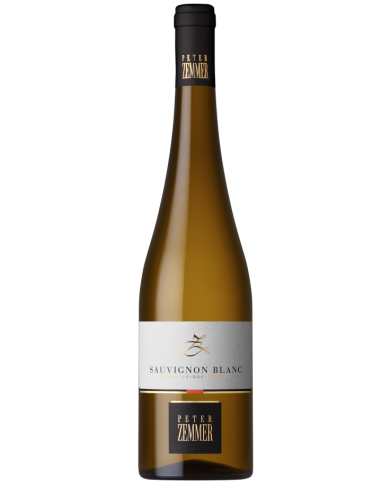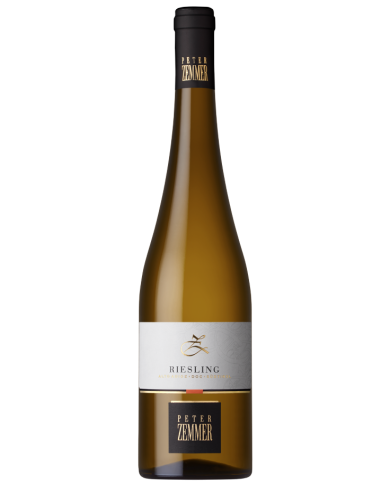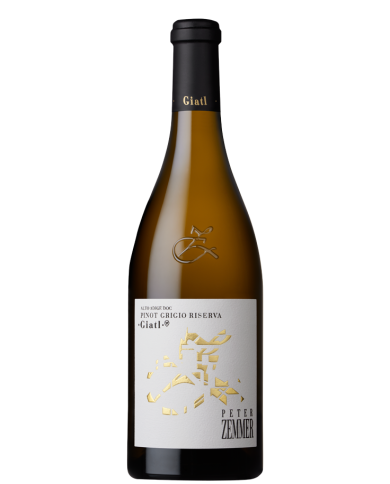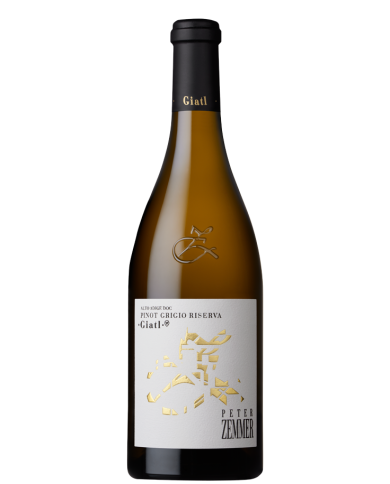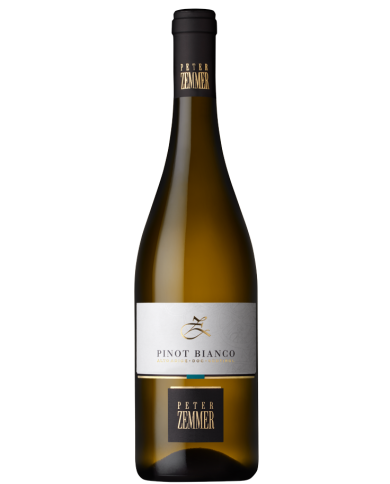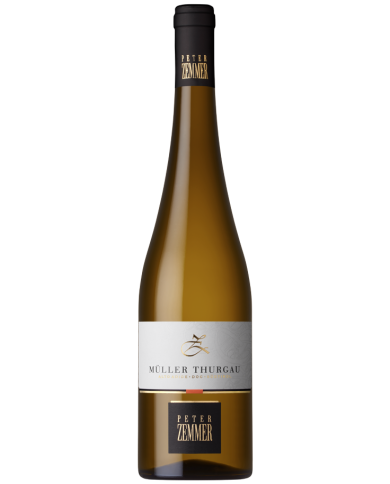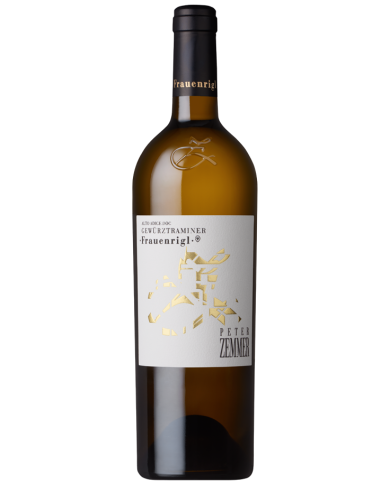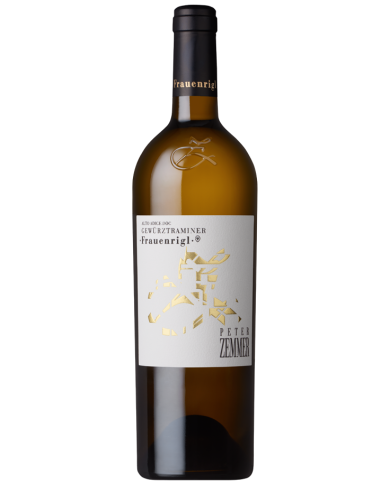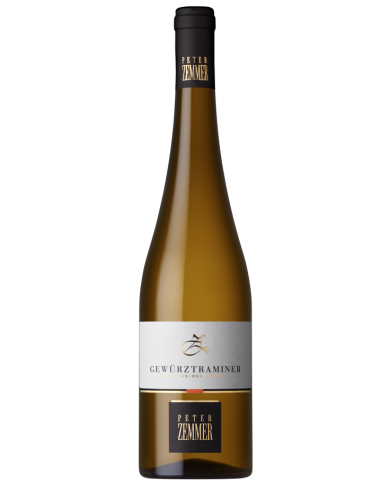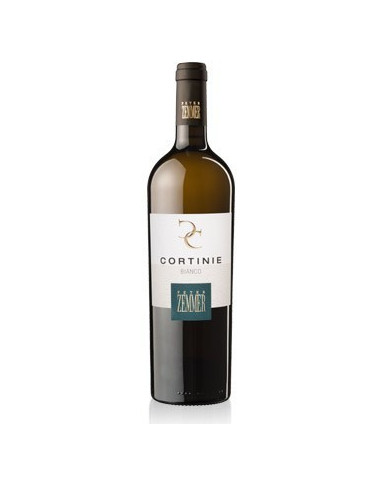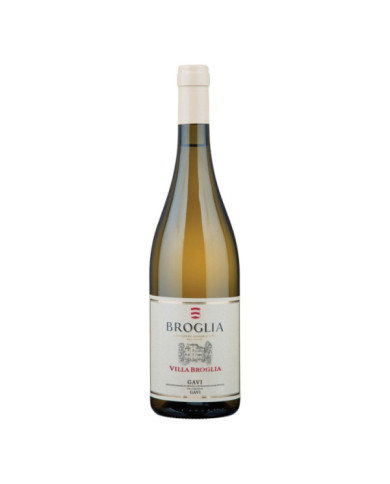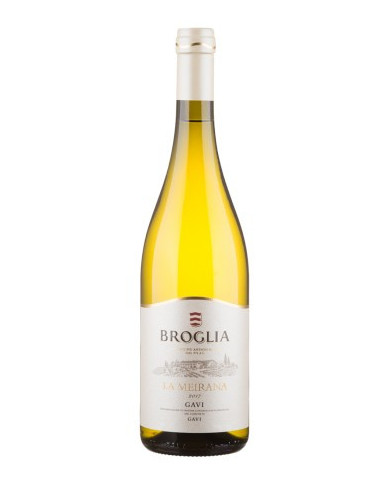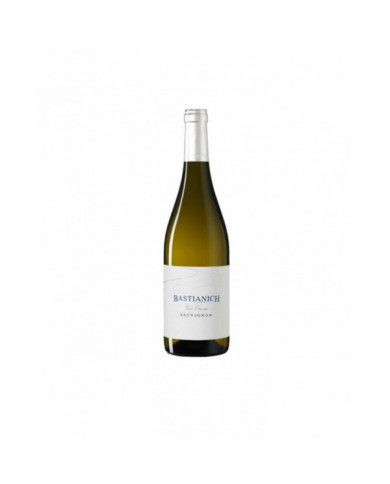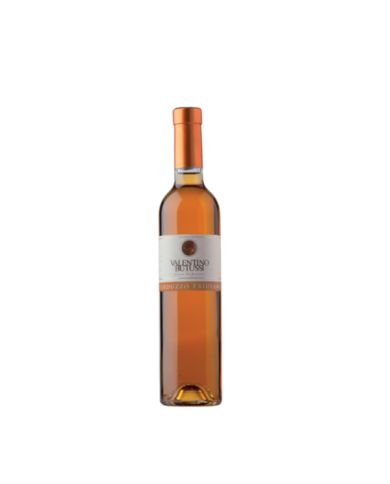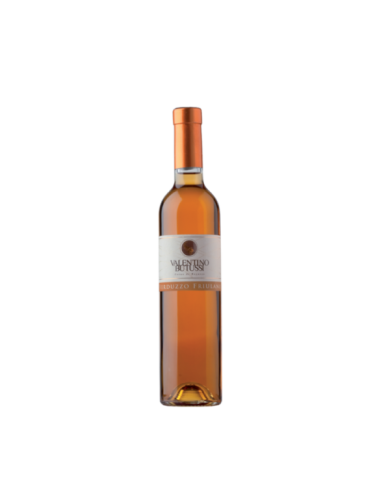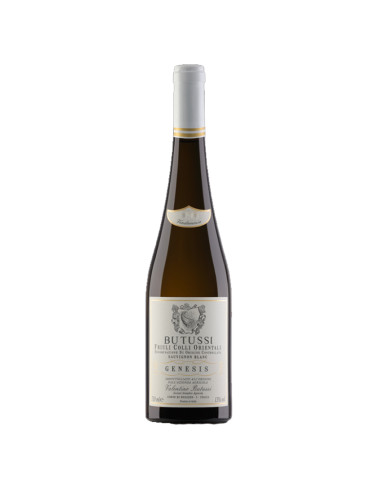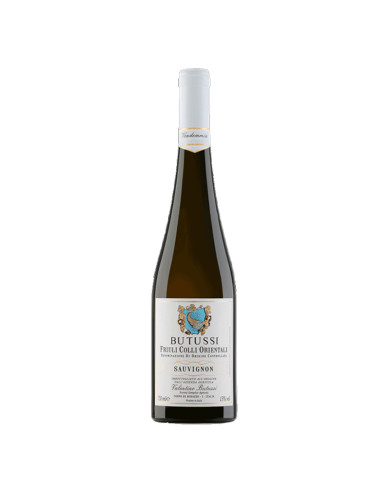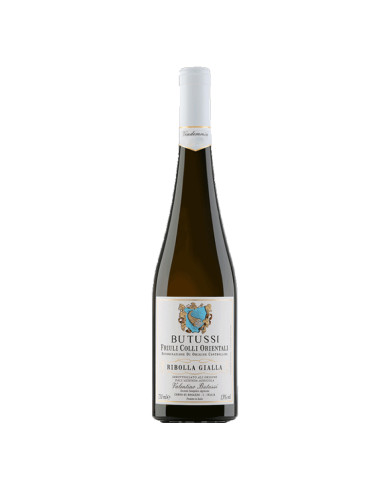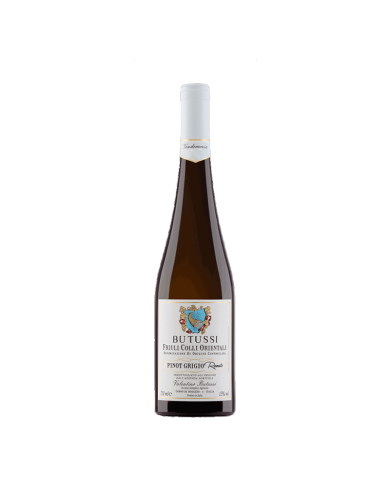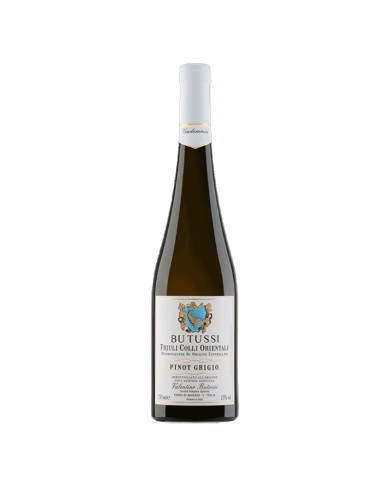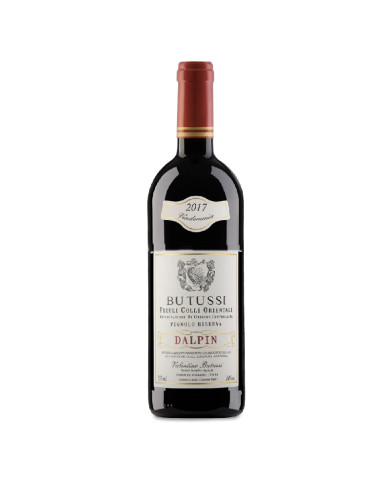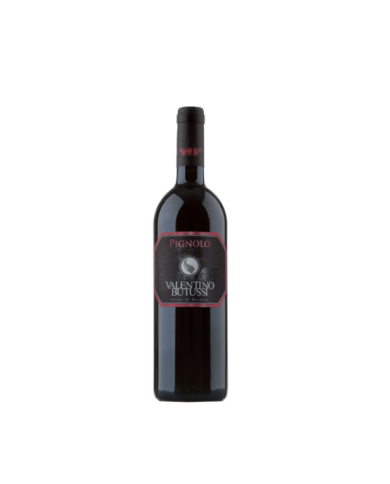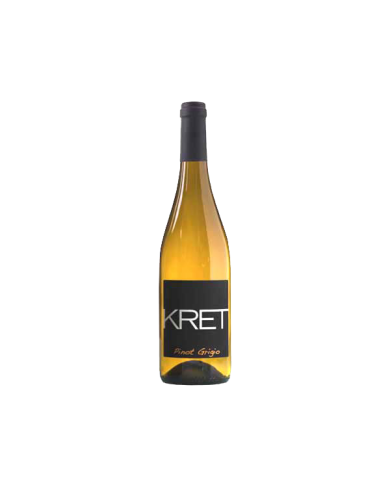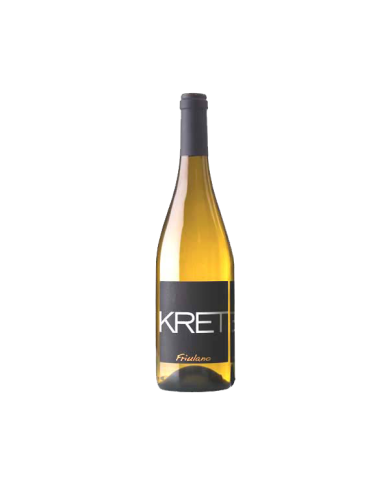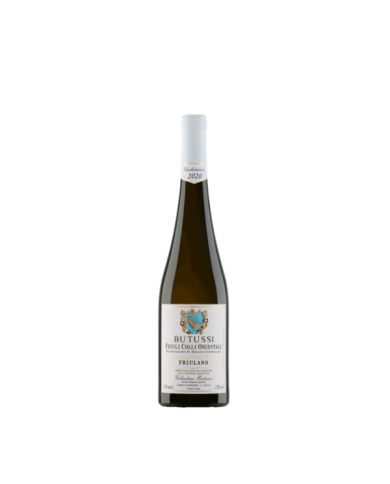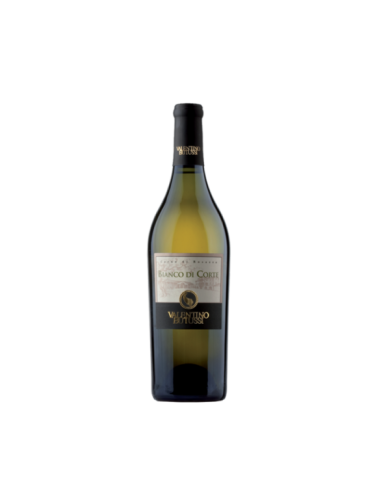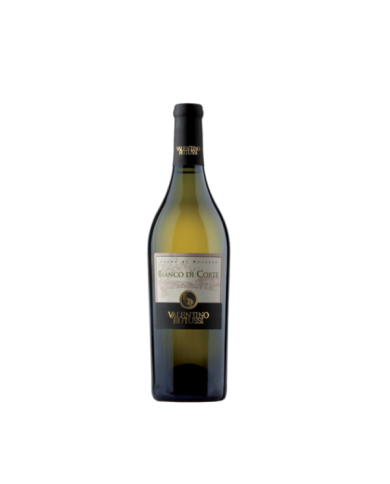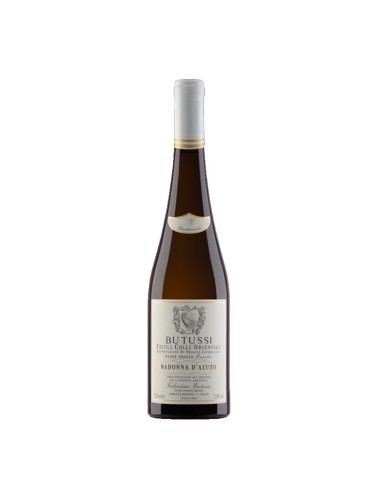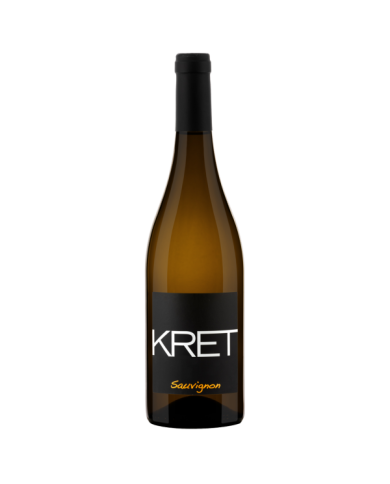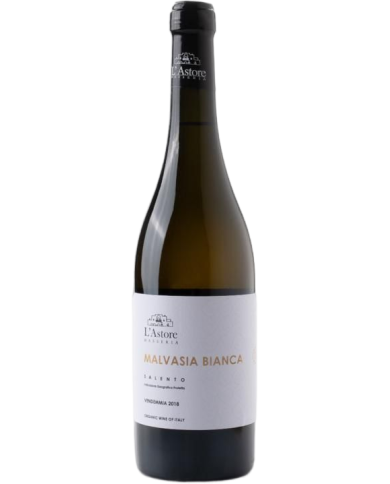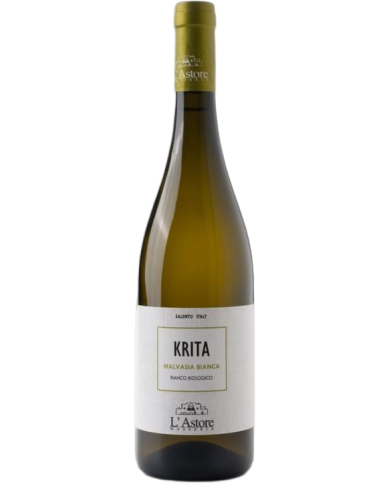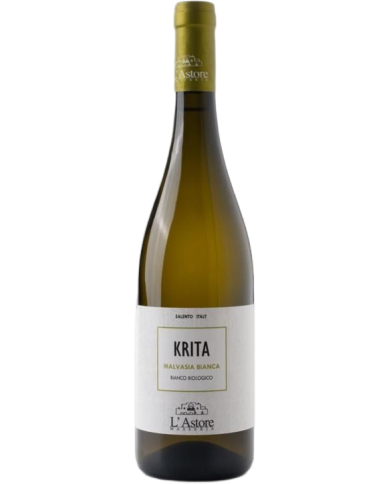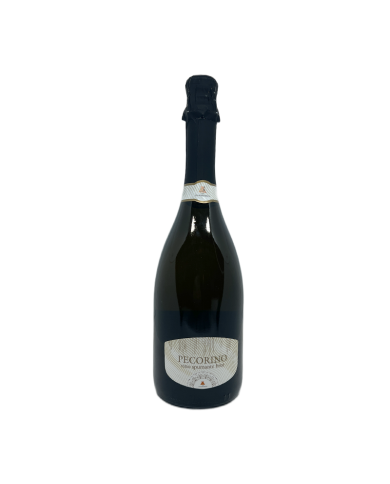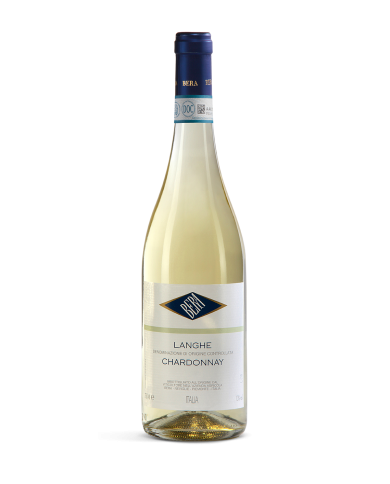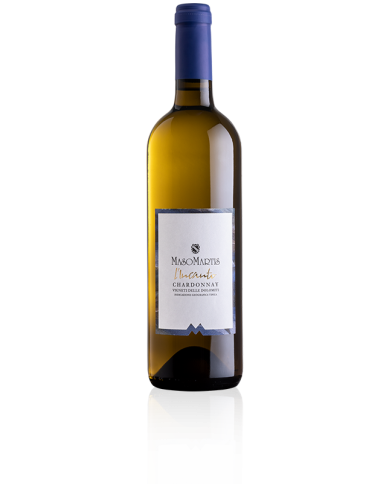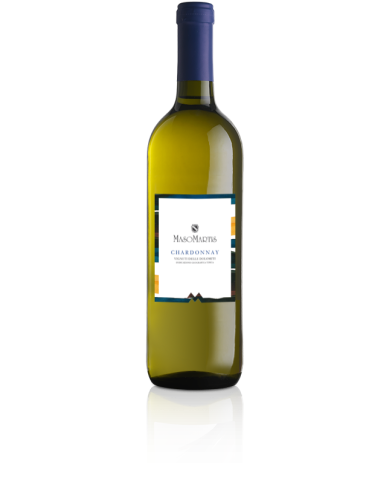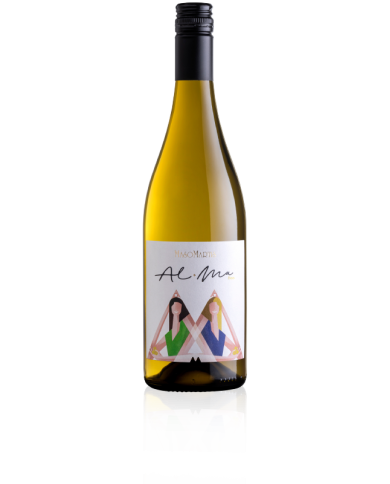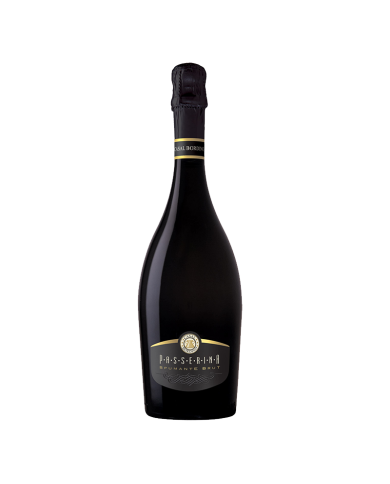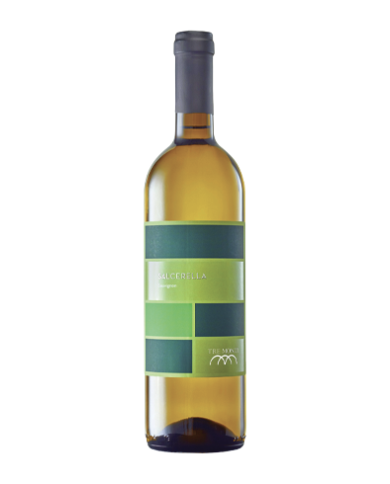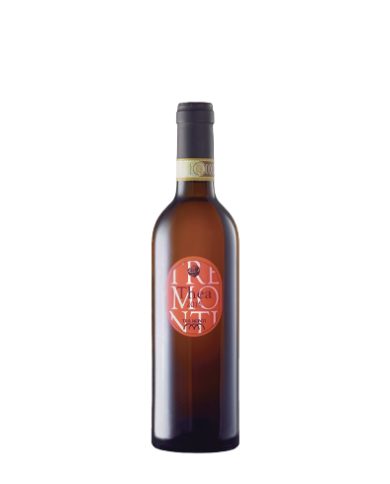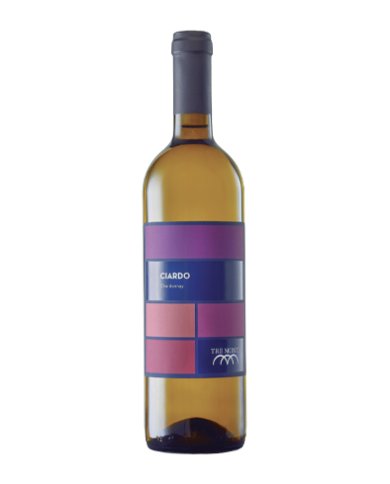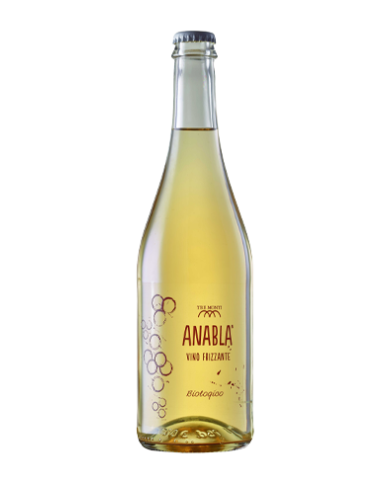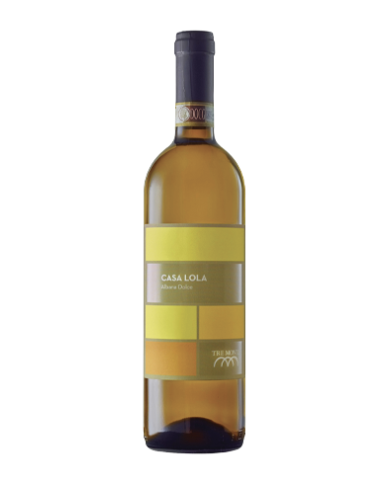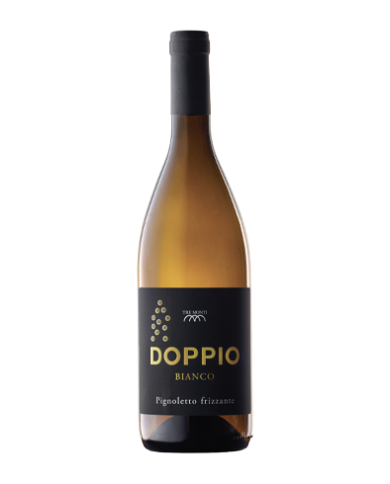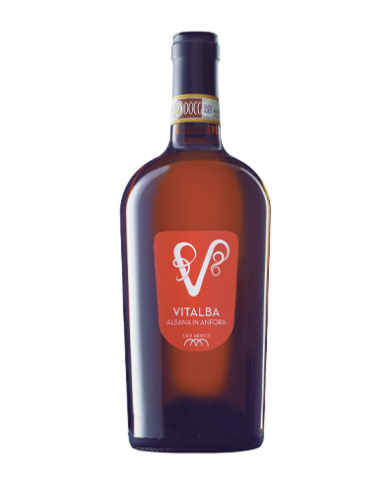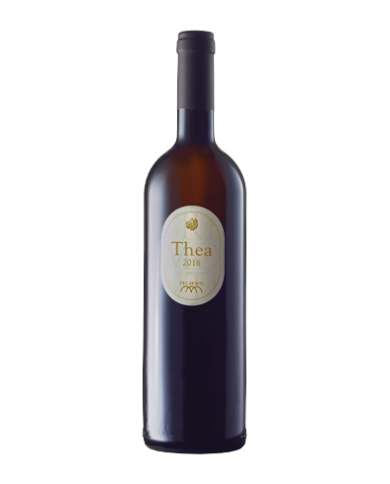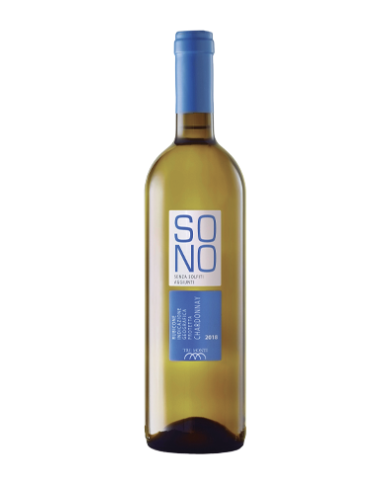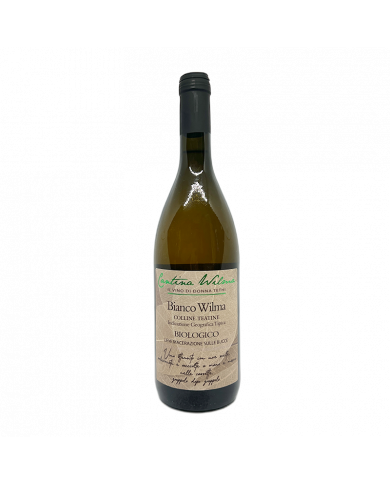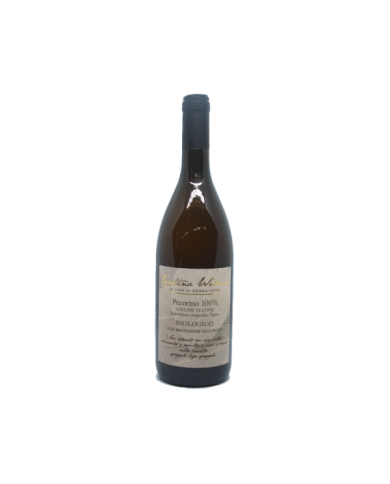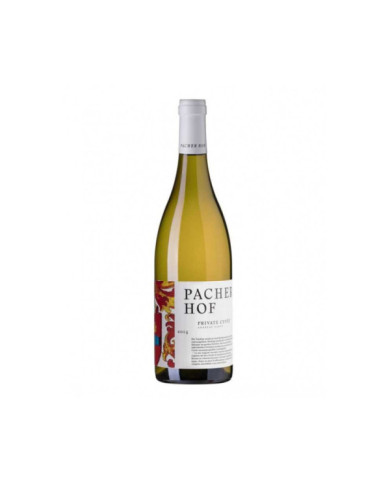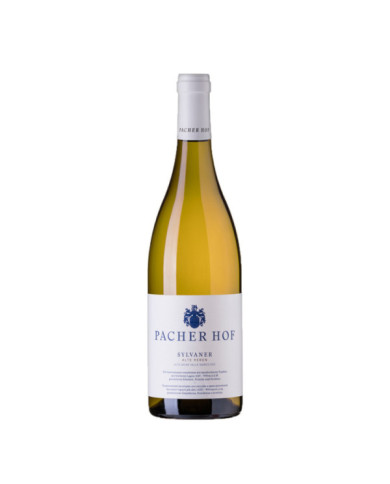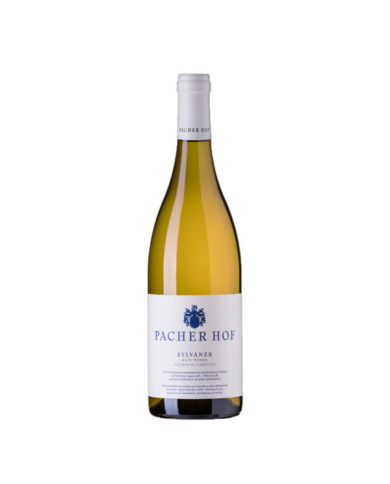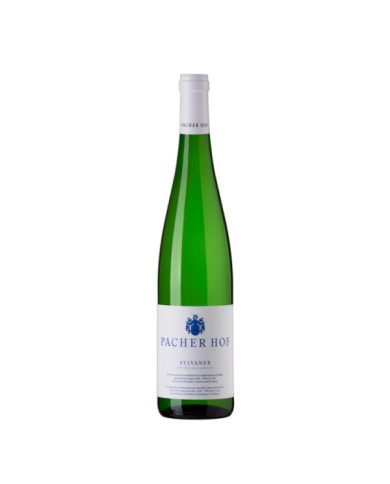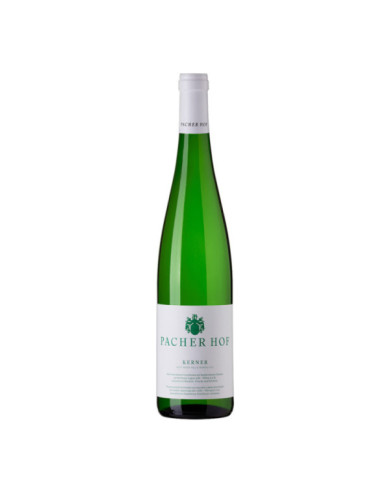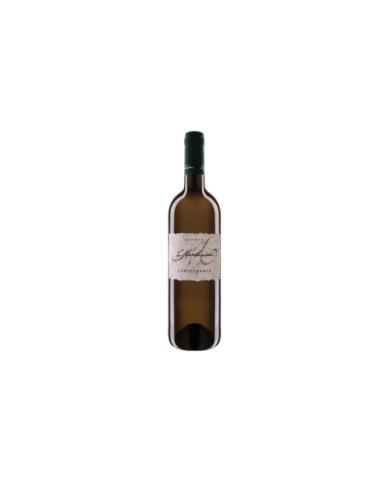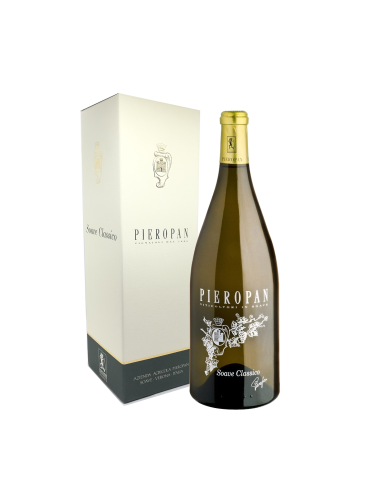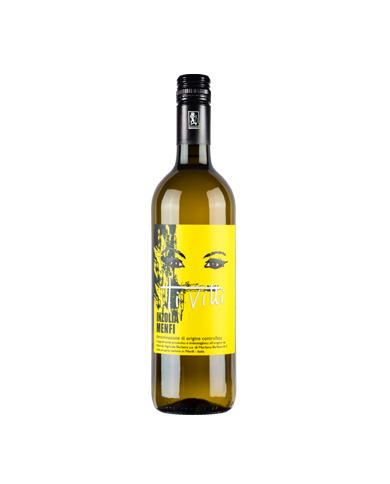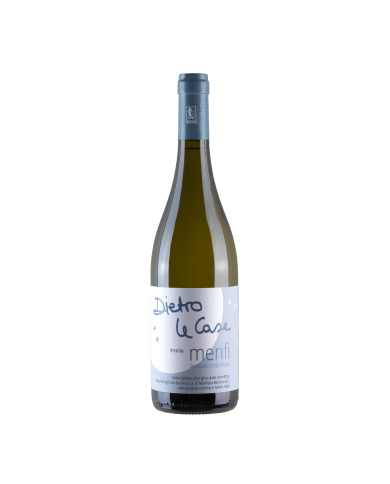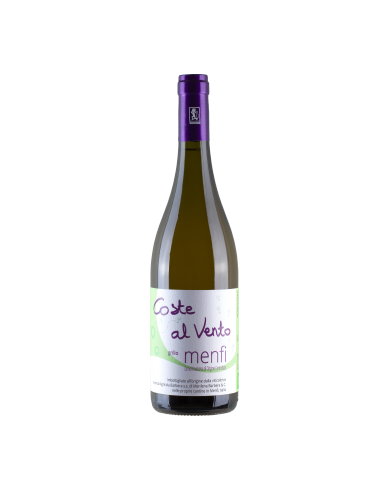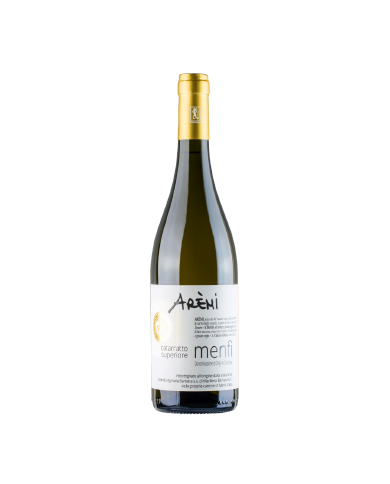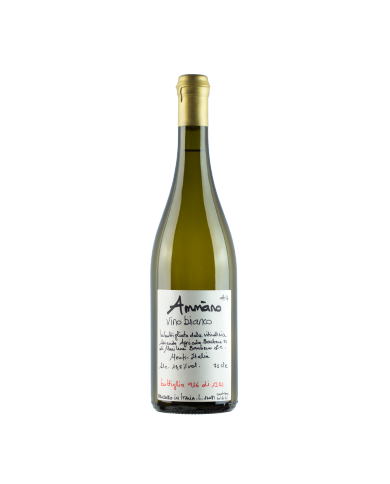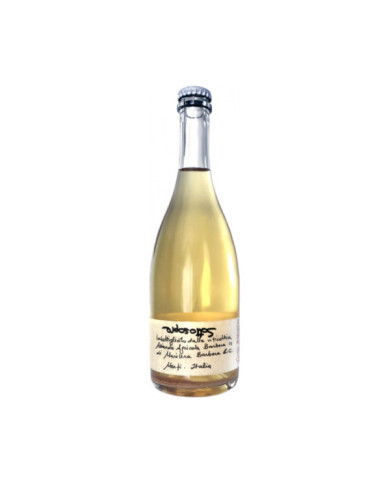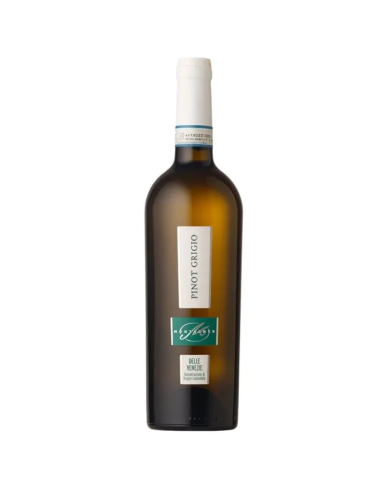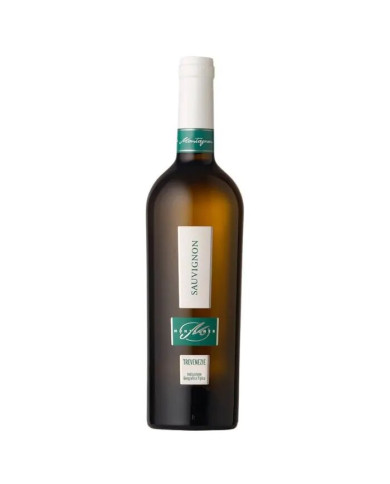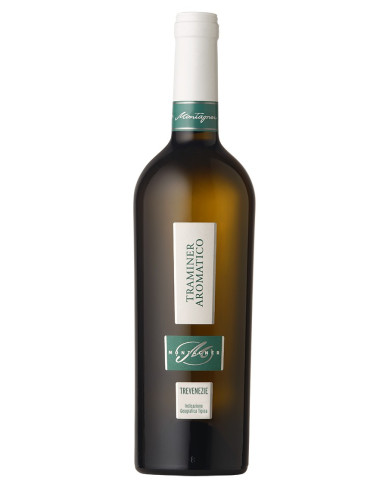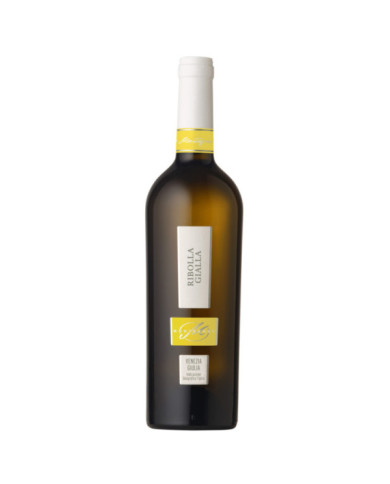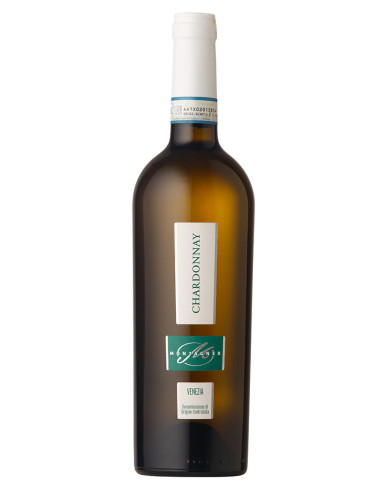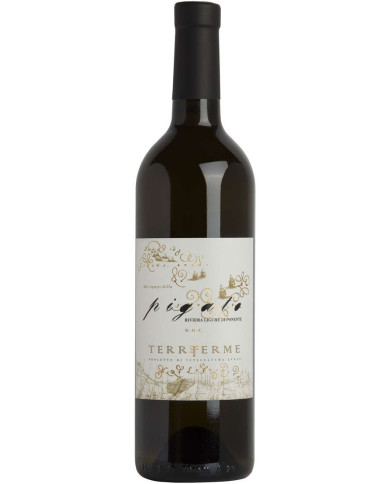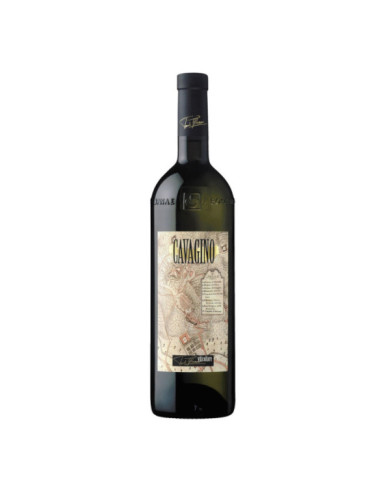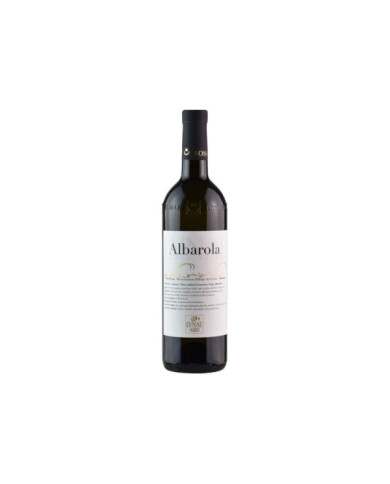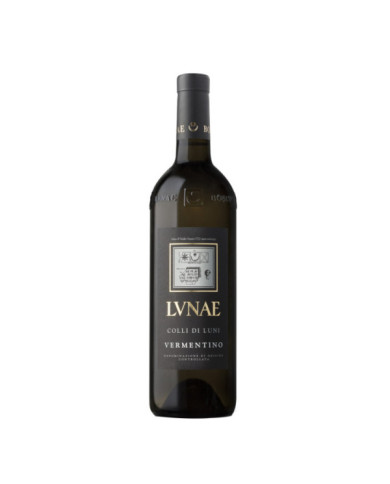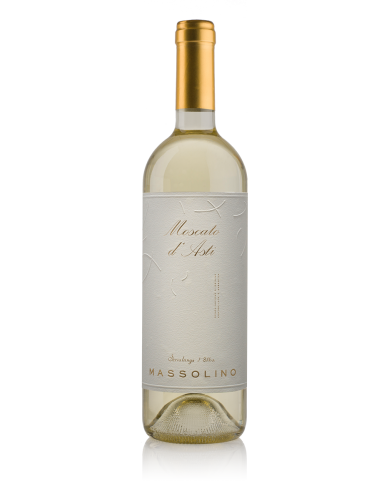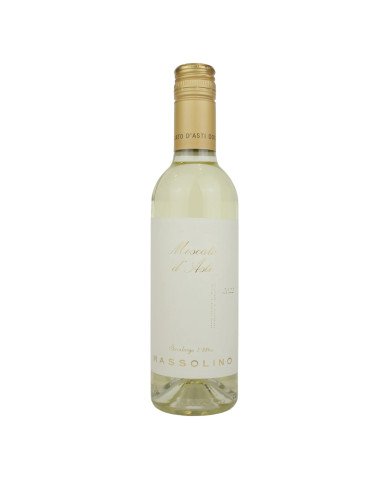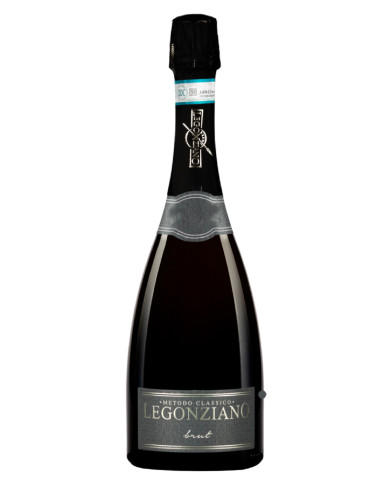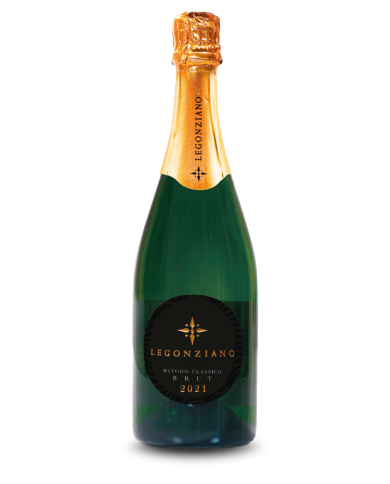It grows in low shoots on guyot systems at an altitude of 450 m slm level in Pochi di Salorno. The favorable position of the vineyard, the very low yield per hectare and the ideal temperature range between day and night are the prerequisites for bringing these grapes to an ideal ripening.
Peter Zemmer's Riesling is a very captivating white wine from South Tyrol thanks to its subtle acidity and soft roundness. It has a light yellow color with golden reflections. The aromatic spectrum is very broad, with aromas of citrus, lychee, aromatic herbs and white flowers. The sip has a nice texture and roundness. Very fresh and enjoyable.
This wine was born in the vineyards of Villa Broglia, planted in 1989 for the birth of Filippo, Piero's son. These vineyards are located in the municipality of Gavi which, due to their splendid position, allows for the production of high quality grapes. It is a wine characterized by fresh, fruity aromas, with a nuance of white flowers and a characteristic note of almonds. Ideal wine for Mediterranean cuisine.
It is only from the best vintages that this great wine is born, which comes from the vineyards of the Tenuta La Meirana, planted between the years 1952 and 1953, after a selection of the best bunches harvested by hand and transferred to the cellar in wooden boxes. The 2010 harvest was characterized by regular flowering in the first ten days of June and a windy summer with high temperature variations between day and night. These particular conditions gave the wine a great structure, excellent sapidity and intense aromas of flint and almonds. Here, following an aging in small "sur lie" steel tanks for 108 months, our "Vecchia Annata" comes to light.
This wine represents the best production of Meirana. It is obtained from the grapes of old vineyards planted in the years 1953 and 1955. The average yield of the vineyards in the various harvests is from 30 to 40 quintals per hectare. The grapes are harvested in wooden boxes and transferred directly to the presses so that the bunches arrive intact. These, due to their rich structure and acidity, make it possible to obtain a great wine suitable for storage, maintaining its aromas and freshness over the years. The name Bruno Broglia is in honor of the founder of the farm. This selection, recognized as one of the reference white wines, gets important national and international awards every year. It was also served as the only white wine at the Gala dinner, for the G20 in St. Petersburg, in the presence of the greats of the Earth, held on 5 September 2013. Bruno Broglia has a straw yellow color with greenish reflections, brilliant: the bouquet very persistent finish, fruity and reminiscent of the aristocratic scent of the grapes from which it comes. It goes well with both fish-based dishes and shellfish where it brings out the characteristics of haute cuisine better.
The Meirana di Broglia is the most important and representative product of the company's production, a gavi among the most classic and appreciated in the world. La Meirana is not just the name of a wine, it is the main Estate of the Cellar.
The Meirana di Broglia is the most important and representative product of the company's production, a gavi among the most classic and appreciated in the world. La Meirana is not just the name of a wine, it is the main Estate of the Cellar.
The Sauvignon Blanc Bastianich wine best expresses both the winemaking tradition of the young company and the ancient local tradition. The tasting notes are accentuated and enhanced by the aromas of grapefruit, herbs and gooseberries. Fresh and elegant, with good acidity and a refreshing and persistent aftertaste, never sour or grassy.
For the vinification of this wine, 30/40% of the grapes are left to dry in wooden boxes for over a month. The remaining grapes are left on the vine and are then harvested when overripe, when the berries begin to brown and dehydrate naturally. The grapes are destemmed and the must is left in contact with the skins for 24-28 hours at a temperature of 12°C to allow the wine to accentuate its varietal characteristics and to acquire the golden yellow-amber color typical of this vine . Aging takes place for 60% for 6 months in steel tanks, 40% for 6 months in 300-litre oak barrels and ends with 2-4 months in the bottle.
Straw yellow in colour, it has an intense aroma of green pepper, tomato leaves, passion fruit and peach. It is a wine with a fresh, lively, harmonious and velvety flavour.
After the destemming and crushing, the crushed grapes are cooled immediately at a temperature of 12°C and left in contact with the skins for 12 â 16 hours. In this period of time the natural enzymes of the must allow a release of the aromatic components, linked to the skin, accentuating the structure and the typical varietal characteristics of the vine. After this period, the must is delicately separated from the skins and fermented intact, without clarification, at a controlled temperature for about 14 days.
A small part (25%) is vinified in white; a part about 40% is placed in cold maceration for 36 hours, for a greater extraction of the pink part. For both, a soft pressing and a start with indigenous fermentation then helped halfway through the addition of a small amount of selected yeast to complete the fermentation. The remaining part of the grapes is pressed, cooled to 7 degrees and left to macerate until the indigenous fermentation begins (usually 5 to 6 days). The macerated product is placed in a press and squeezed at minimum pressure, the must thus obtained continues its fermentation in traditional 2nd and 3rd passage barrels, in non-toasted oak with a capacity of 5/7 HL. One month before bottling, the three different vinifications are combined to form a single wine.
PIGNOLO BUTUSSI FRIULI VENEZIA GIULIA Grape variety: pure Pignolo Winy, tannic taste, reminiscent of raspberry. It is a wine to be discovered. Wine for meat dishes of Friulian cuisine, especially it prefers the cià r in padiele (beef stew). Serving temperature: 16 â 18° C
PIGNOLO BUTUSSI FRIULI VENEZIA GIULIA Grape variety: pure Pignolo Winy, tannic taste, reminiscent of raspberry. It is a wine to be discovered. Wine for meat dishes of Friulian cuisine, especially it prefers the cià r in padiele (beef stew). Serving temperature: 16 â 18° C
Straw yellow color tending towards greenish. Delicate and pleasant aroma reminiscent of wild flowers; it has a dry taste with a soft and velvety taste and a bitter almond aftertaste. It is excellent as an aperitif, but also goes well with appetizers in general, with eggs and asparagus and is excellent with San Daniele ham.
Straw yellow color tending towards greenish. Delicate and pleasant aroma reminiscent of wild flowers; it has a dry taste with a soft and velvety taste and a bitter almond aftertaste. It is excellent as an aperitif, but also goes well with appetizers in general, with eggs and asparagus and is excellent with San Daniele ham.
The White Angel is a CuvÃĻ, it is aged in wooden barrels and is cared for and harvested according to the lunar tides. It is fresh, fruity and smooth to the taste. The palate shows spring flowers and a hint of caramelized citrus. At the same time, the grapes give the cuvÃĐe a beautiful minerality and volume. We can recommend this great expansion with seafood, shellfish or grilled fish.
Born from clean and sustainable agriculture, respecting a landscape designed by culture and tradition, since 2010 the wines of L'Astore are certified "produced from organic grapes". Symbol of the Salento area in its rosÃĐ vocation and in the old Alberelli di Negroamaro and Primitivo; the production enhances the ancient native vines such as Negroamaro, Malvasia Nera, Malvasia Bianca Antica, Susumaniello and Primitivo.
Born from clean and sustainable agriculture, respecting a landscape designed by culture and tradition, since 2010 the wines of L'Astore are certified "produced from organic grapes". Symbol of the Salento area in its rosÃĐ vocation and in the old Alberelli di Negroamaro and Primitivo; the production enhances the ancient native vines such as Negroamaro, Malvasia Nera, Malvasia Bianca Antica, Susumaniello and Primitivo.
A great white vine in a land of great reds can give great results. This elegant straw-yellow colored wine reveals nobility of character in the intense, ample, persistent fruity aromas, with a hint of yeast. Fine, with good structure and freshness, it loves an aperitif, land and sea appetizers.
Among the few white wines in the land of reds, this wine comes from the now famous native grapes. It has a very delicate straw color and floral aromas reminiscent of acacia, wild flowers, honey. In the mouth it is fresh, sapid, pleasantly acidulous, decidedly inviting. It is an excellent aperitif and goes nicely with appetizers, pasta and fish dishes.
Trebbiano Spoletino is a typical variety of the territory that extends between Montefalco, Trevi and Spoleto; perhaps the name derives from âTrebiumâ, Trevi in Latin.
It is born on clayey soils and the harvest is carried out in the early hours of the morning. The vinification aims to enhance the authenticity of the vine and gives life to a white with a clear, precise impact, where freshness, fruity notes and flavor emerge. Its character makes it extremely versatile: a Vermentino that exalts the most genuine nature of Sardinia in every sip
Not only albana, in our heart passito: everything played on elegance, balance and smoothness.
A second fermentation in the bottle for our first ancestral one, however linked to the deeply rooted regional tradition of "mosso" wine. We like to call it a classic method âĶ halfway..
The most "oriental" of the Pignoletti, it brings the verve of the Emilian tradition in sparkling wines into the glass. Fermented in autoclave according to the charmat method, for a delicate and excellent 'bubble' for a meal
Being among the pioneers of Georgian amphora (kvevri) winemaking in Romagna was truly an inspiring privilege for us. Amphorae are a splendid tool: they have proved to be an incredible accelerator and concentrator for the maturation of Albana wine, without however affecting even a single pinch of its varietal profile! And so Vitalba was born in 2013: a successful gamble, now the white "flag" of our company.
The link with tradition and the territory is important, very important, but sometimes the producer's curiosity is the engine of sometimes surprising "experiments"....
On the eve of the 2019 harvest we were on the verge of uprooting the last hectare of our splendid "della flame" Trebbiano vineyard in Petrignone: the commercial response and the market "mood" were too lukewarm (euphemism) towards this vine. But, "rather" than eradicating it, we wanted to make an extreme attempt, and put the maceration experiences acquired with Vitalba to good use and do something new: 25 days of maceration in concrete, a bit of good luck, and, voilà .
Obtained from native grapes and selected in the harvest. Appearance of straw yellow color with greenish reflections. On the nose it is fresh and floral with notes of white berry flowers and balsamic notes on the aftertaste. Ideal with all seafood cuisine, it also goes well with appetizers and delicate main courses.
Vine rediscovered a few years ago, widespread throughout the Abruzzo region. The name "pecorino" is given by the sheep's face shape of the bunch and by the fact that when the shepherds passed through during the transhumance, the sheep stopped to graze the leaves of this vine. Cantina Wilma obtains its wine from the "Pecorino" vine with low-row plantings on sandy calcareous soil. Appearance of yellow color, excellent fruity bouquet. The flavor is harmonious and of good quality. Ideal with all seafood cuisine, it also goes well with appetizers and delicate main courses.
The Pacherhof Private CuvÃĐe Andreas Huber is an intimate gift from the winery's winemaker. A white wine that manifests its conception of a great interpreter of the Dolomites capable of reaching important peaks of balance. Floral and delicate on the nose, it whispers notes of elderberry and unfolds spicy sensations. Mineral and savory fluid, characteristics directly connected with the particular composition of the mountain soils, of beautiful elegance and intensity
Message in a Bottle Bianco now joins our portfolio of acclaimed wines. A blend of Vermentino (84%), Sauvignon (14%) and small Trebbiano is ideal as an aperitif or to accompany fish and vegetable dishes. With an alcohol content of 12.5% it is aged for 5 months.
The La Rocca vineyard is located on the hill of Mount Rocchetta, close to the medieval Scaliger castle of Soave. La Rocca enjoys a particular microclimate, which makes it possible to obtain a wine with a unique and unreproducible bouquet and gustatory notes, typical of a pedigree wine. Innovative, since its debut in 1978, it has marked a deep groove in the territory, becoming an undisputed symbol of quality and tradition.
The old vineyards of Inzolia planted by my father more than fifty years ago are an extraordinary legacy on which to build the future of viticulture in Belicello. The original clones, perfectly adapted to the particular conditions of the environment to which they belong, exuberantly express the personality and wine culture of the Menfi area. The soil, mainly calcareous and pebbly, gives the wine an intense and at the same time delicate sapidity, great depth and aromatic breadth.
In Sicily, "coast" is the side of the hills that gently slope down to the sea, covered by vineyards as far as the eye can see that bask in the sun, unkempt by the fresh Mediterranean breezes. These are the places of Grillo, a fascinating native variety that interprets the beauty of the Menfi terroir with great personality. Son of generous lands, Coste al Vento gives us a full and ripe fruit that blends with the brackish notes brought by the sea winds, in a harmonious crescendo made original by maceration on the skins and fermentation with indigenous yeasts.
ArÃĻmi, one of the four suits with which the gambling cards are painted, as well as the community cards. The coin suit, which has the color of gold and like gold is precious in the game of broom and seven and a half. Catarratto is liquid gold, culuri d'arÃĻmi: intense and brilliant gold that lights up from the sun and the sea of Sicily, full of the millenary history that skilled hands have handed down to us, from generation to generation, from the Greek motherland to the fertile countryside of Memphis. ArÃĻmi is love for the land, respect for knowledge, conscious acceptance of a heritage to be preserved.
By hand, to recover the value of manual work, the care and joy in doing it. By hand, to underline the absolute craftsmanship of the production of a wine made without the aid of machinery, without additives or synthetic oenological products, in which the human component is at least as important as the natural one. Only grapes and hands: in a world where machines and homologation increasingly replace man and his creativity, hands are, perhaps, the thing to which we must return.
Sottosopra is a sparkling wine obtained with the ancestral method and is bottled without prior disgorgement. If you love strong flavours, drink it as it is, with all its yeasts, or keep it upside down in the fridge for 24 hours if you want to disgorge it before tasting it. Intense golden yellow, very veiled because still on its lees. ...
The Vermentino "Black Label" by Lunae Bosoni is a soft and Mediterranean white wine, with a pleasant, generous and immediate drink. Enchant the sense of smell with evocative scents of flowers and fresh fruit. The taste is harmonious, fresh, fruity and balanced. Excellent with delicate and spicy dishes based on fish
Traditionally, Moscato D'Asti DOCG is also grown in Serralunga. We have been making it since 1993. Sweet, fragrant andâĶ
Cultivated in Monforte d'Alba at about 530 meters above sea level, the Langhe DOC Riesling was born out of our authentic passion for this vine.
The best Italian white wines
Italy is home to important white wines. In the section of our Clickwine online wine shop dedicated to the best Italian white wines, you will find bottles of excellent white wine carefully selected by our Sommeliers.
The denominations used in our country to classify wines are DOCG, DOC and IGT. Sometimes denominations such as DOP and IGP are also found: these acronyms have similar meanings to the previous ones but are used by wineries that mainly sell their wines outside the Italian territory.
The production of white wine
White wines are produced from both light and dark berry grapes, but vinified in white: that is to say that during maceration there is no contact between the must and the marc, so that the skin - exactly the opposite of what it happens for the red - it doesn't give substances and color.
Its myriad nuances vary according to the characteristics of the vine, the refinement method and the vine cultivation area.
In white winemaking, once the grapes have been harvested, they are transported to the cellar, destemmed and pressed and the must is separated without any maceration or with a short maceration. Sometimes, however, the grapes are pressed and then macerated with the skins at a low temperature for a more or less long period. In this way, richer and softer wines can be obtained.
This phase is followed by the clarification of the white product, which can be done by letting the must rest, by cooling, centrifugation or filtration.
Fermentation begins either by introducing selected yeast into the must or spontaneously, with the indigenous yeasts present in the grapes. To maintain the aromas, finesse and freshness of white wines, fermentation is done at lower temperatures than for red wine vinification, generally around 18°C.
To obtain a fresh and lively wine, to be drunk young, malolactic fermentation is avoided, bottling early, after filtration and stabilization. More complex wines, aged or fermented in wood, are bottled only after several months spent in barrels.
How to taste white wine
First of all, you need to decide whether to uncork the bottle immediately or whether to age your white wine. If you want to immediately surrender to their charm, their aromas of aromatic herbs, flint or their notes of exotic fruit, then serve your white at the right temperature: 6-8° for a young white and 8-10° for a softer one. it is structured.
How to match white wine
Dry white wines will also surprise you at the table and not just for their straw yellow colour. As an aperitif and above all combined with a fish dish, white wine is certainly a must, but it is not easy to perceive which of the many labels will be the most suitable for the occasion
However, we suggest you try some white wine as an accompaniment to fresh, low-fat cheeses rich in milk such as the tasty buffalo mozzarella, or with soft, flowery-rind cheeses. They are obviously also perfect with white meats, such as the classic scallops but beyond the customs, white wine also perfectly decorates a table based on meat and risottos as well as truffles. Enter our Clickwine online wine shop to receive specific suggestions for buying the best white wine at the best price to pair with your favorite dishes.
White wines: prices and offers
Every week you will find on our Clickwine online wine shop selected white wine labels at special prices in this section and in the one dedicated to offers, you can then take a look at those with the best value for money.
A wide choice of quality products is available at affordable and truly exclusive prices. Do not miss the incredible offers of white wines belonging to all the most prestigious wineries of Italian production, discover Italian wines loved and internationally recognized.
Enter the Clickwine catalog and expand your choice by purchasing online exclusive articles of small-sized wineries, but with an exceptional production of the highest quality.
White wines: longevity and conservation
How long can I keep white wine in the cellar? Do white wines improve like red wines with age? These are the questions that a wine consumer asks himself when speaking of white wine.
In general, white wines are much less long-lived than reds, for two reasons: the tannins and the ageing. Tannins are antioxidant substances present in the skins of wine which are not present in whites; As far as aging is concerned, however, most of the white wines are aged in steel for a few months, even the reds, if they are aged a little in steel and undergo rapid maceration, do not last many years. Let's say that a classic white that ages in steel lasts from 2 to 3 years maximum. If it is macerated or aged in wood, it can last up to 20 years and improve from year to year.
How many types of white wines are there?
There is no exact number of types of white wines, as there are different white grape varieties that can be used to make white wines. Some of the most common white grape varieties used to produce white wines are: Chardonnay, Sauvignon Blanc, Riesling, Pinot Grigio and Moscato. There are also other less common varieties such as GewÞrztraminer, Semillon and Viognier. Each of these varieties can be used to make white wines with different and unique characteristics, so there are many different types of white wines available.
How to recognize a good white wine?
There are several ways to recognize a good white wine. One of the easiest ways is to taste the wine and evaluate its taste and aroma. A good white wine should have a pleasant taste and a delicate, complex aroma. Other factors that can indicate the quality of a white wine are the vintage, the grape variety and the production area. In general, white wines produced with high quality grapes and in particularly favorable years tend to be more valuable and of higher quality. Furthermore, white wines produced in regions renowned for the production of high quality white wines can be considered more valuable than the ones produced in other regions.
How to understand if a white wine is good?
As mentioned above, one of the easiest ways to understand if a white wine is good is to taste it and evaluate its taste and aroma. A good white wine should have a pleasant taste and a delicate, complex aroma. Furthermore, it is important to keep in mind the quality of a white wine can be influenced by many factors, such as the vintage, the grape variety and the production area. For example, white wines produced with high quality grapes and in particularly favorable years tend to be more valuable and of higher quality. Furthermore, white wines produced in regions renowned for the production of high quality white wines can be considered more valuable than the ones produced in other regions.
Why is it called white wine?
White wine is called this way because it is produced using white grapes. Most of the white grapes have a transparent or slightly colored skin, therefore the wine produced with these grapes has a clear and transparent colour. Sometimes the color of white wine can be influenced by the type of grape used, the winemaking process and the addition of other ingredients, but in general, white wine has a clear, transparent color.
How to replace white wine?
If you want to substitute white wine in a recipe, there are several ingredients you can use. One of the more common options is to use chicken or vegetable broth instead of white wine. Other options may include using white vinegar or apple juice diluted with water. Also, in some cases you can omit the white wine entirely and use other ingredients to achieve the desired flavor in the recipe.

